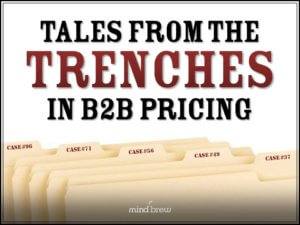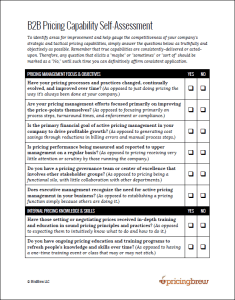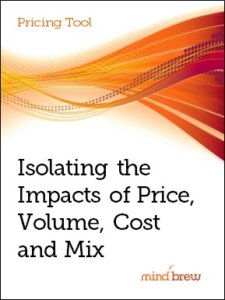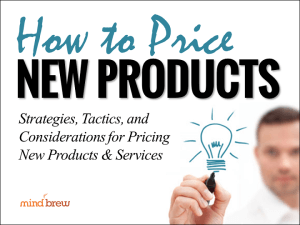In the Tales from the Trenches in B2B Pricing webinar, we glean dozens of valuable lessons from 10 cautionary case studies in pricing improvement. While a couple of these harrowing tales are real head-shakers, we can empathize with most of the stories because it’s fairly easy to understand how and why the mistakes were made.
Though every one of these cases is very different, there are some common themes and threads we can identify. In fact, many of the major problems and challenges these pricing practitioners encountered could have been avoided altogether using some of the most basic pricing tools available.
These fundamental pricing tools…all freely available to every practitioner…include things like:
- The Price Segmentation Model — Price segmentation is the bedrock of the pricing practice. Without a solid price segmentation model, you have no basis for comparison, no basis for determining “good” and “bad” outcomes, and no way to align your prices to what customers are really willing to pay under various circumstances. Trying to do pricing without a price segmentation model is like trying to do carpentry without a hammer…or a saw…or even wood, for that matter!
- The Price/Volume Scatterplot — You’d be hard pressed to find a pricing consultant who doesn’t have a scatterplot at the ready. Why? Because it’s one of the most intuitive and instructive ways to visualize and communicate pricing performance. A scatterplot can make a variety of pricing dynamics obvious to everyone—dispersion or consistency, expected price levels, positive and negative outliers, relative realization or yield, slope or discount acceleration, etc.
- The Breakeven Volume Formula — In the absence of more sophisticated elasticity measures, you can’t predict with certainty what will happen to volumes and margin-dollars when you lower a particular price by, say, 15%. Using a simple formula, however, you can determine what must happen to volumes in order to breakeven on margin-dollars. And from there, it’s a whole lot easier to gauge whether or not that outcome is even realistic.
- The 5 Why Diagnostic Technique — The “obvious” solution to the “obvious” problem is very often wrong…on both counts. So instead of jumping to conclusions, it’s good to get in the habit of digging deeper. One of the most powerful diagnostic techniques is also one of the simplest—just asking “why” five times in succession can help you uncover and address the real root-causes behind problematic symptoms.
As the cases we cover in the webinar clearly illustrate, it’s really easy for pricing practitioners to get lost in the esoterica and lose sight of the fundamentals. And when we think of “pricing tools” we tend to envision complex and sophisticated technologies that cost a fortune and take months to implement.
But in pricing… as in most areas of life…mastering the fundamentals is 80% of the battle. And some of the most useful pricing tools are actually pretty simple and free of charge—so there’s no excuse for not having them in your toolbox.
















